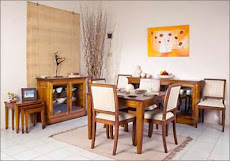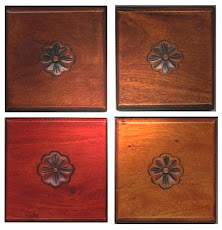We are going to see more designs and types of furniture, which came up into prominence in the eighteenth and nineteenth century. Some of these people were very influential and powerful as well. They were the Adams, the Hepplewhite, and the Sheraton, King William IV and the early Victorian. They encouraged their own styles of furniture. Later GeorgianAdam, Hepplewhite and Sheraton (1770-1810) a number of styles succeeded and partially overlapped each other during these years.AdamThe Adam brothers, Robert and James, were primarily architects, but their interest in design did not stop with the building itself. Not only did they plan the layout of their mansions, but usually they decided the decoration and coloring of the principal rooms and the furniture to go in them. Their work was inspired by ancient Greek and Roman art, and most of their decorative ideas were borrowed from those sources. The honeysuckle (anthemion), the ram's head and hoof, and garlands of husks are typical features. The work of the Adams was carried out between 1760 and 1790 and many of their designs for furniture were actually made by Thomas Chippendale's firm.HepplewhiteGeorge Hepplewhite was a cabinet-maker whose business was run later by his widow, who published a book of his designs. These show pieces of simple form and small size; one of the most noticeable is perhaps the chair with a heart-shaped or a shield-shaped back. Sometimes the shield holds a pierced and carved Prince-of-Wales feather.SheratonThomas Sheraton published his first book of patterns in 1791. His designs show furniture that is much more slender in line than hitherto, and he led a return to the use of" inlay; with this his name seems to be linked inseparably. Inlay often took the form of cross banding and stringing, and a common feature was an oval shell of satiriwood, scorched to imitate shading. After about 1800, square legs were replaced by turned ones with reeding. Sheraton's most characteristic chairs have rectangular backs with horizontal bars. Use was made of satinwood, as well as the more general mahogany, either painted or inlaid or left quite plain.Regency (1800-1820)The Regency style is a combination of at least three, or any one may be found alone in apiece made during the period. The three principal styles are, Greek and Roman: figures of mythological gods and goddesses, the lyre (used as the shape of table-ends), the lion's-paw foot.Egyptian: sphinxes, Egyptian heads and feet as tops and bases of columns; crocodiles.Chinese: Chinese patterns, shapes and colors; of which the contents of the Pavilion at Brighton are outstanding examples.All types of unusual woods were used, as well as mahogany, and there was frequent use of brass for inlay and gilt bronze for mounts. Chairs were smaller in size than in earlier periods, which explain why they are so very popular today. Early Regency chairs had legs shaped like a curved sword (the saber, after which they are named), but later they were turned.William IV and Early Victorian (1820-1840)Much of this furniture can be confused with that made earlier in the Regency period. Although many of the designs are similar, they were carried out in a much heavier manner, and chairs, tables and other pieces are coarser and clumsier in appearance. The saber leg was no longer used, and almost all furniture had turned supports, often tapered and carved.Every artist gets inspiration from different sources. The Adams were inspired by the ancient Greek and Roman art. One of the most noticeable works of George Hepplewhite is perhaps the chair with a heart-shaped or a shield-shaped back. Sheraton's most characteristic chairs have rectangular backs with horizontal bars.
Source: Free Articles
skip to main |
skip to sidebar


ALAM HIJAU INDONESIA, CV
C/P : Mr. Khoeroni
Jl. Ratu Kalinyamat, Krapyak – Jepara, 59421, Central of Java, Indonesia
E-mail : ronifiro@yahoo.co.id
Phone / Fax : +62 - 291 – 592701
Feel free to contact our Customer Service Representatives ( CSR ) with any questions you may have, we will be glad to help you in any way we can.



Indonesia manufacture and exporter of antique furniture
Alam Hijau Indonesia
Welcome to ALAM HIJAU INDONESIA, a direct sourcing reproduction furniture company that is operated from Indonesia but deliver all over the globe. ALAM HIJAU INDONESIA is a wooden furniture manufacturer and exporter company based in Jepara Indonesia. We specializes in french antique furniture reproduction and english-american style furniture reproduction, and work directly with local sources who have many years of experience tailoring certain styles of reproduction furnitures that is based on original styles and designs created.
We make our furniture at low prices as possible. We also accept a custom design order for hotel project with the best raw material. Our high end quality wooden furniture is different to most of internet furniture site sellers since we have our own factory located in Jepara, Central of Java, Indonesia
We make our furniture at low prices as possible. We also accept a custom design order for hotel project with the best raw material. Our high end quality wooden furniture is different to most of internet furniture site sellers since we have our own factory located in Jepara, Central of Java, Indonesia
Infolinks In Text Ads

Product
- BEDS. (11)
- BOOKCASE and DISPLAY CABINET (40)
- CHAIRS (39)
- COFFEE TABLE (6)
- CONSOLE (6)
- DESK (14)
- DINING TABLE (8)
- DRESSING TABLES (6)
- FREE ARTICLES (12)
- MIRRORS (12)
- NIGHT STAND and CHEST (18)
- SIDE TABLE (10)
- SOFA (9)
- WARDROBES (7)

Contact Us
ALAM HIJAU INDONESIA, CV
C/P : Mr. Khoeroni
Jl. Ratu Kalinyamat, Krapyak – Jepara, 59421, Central of Java, Indonesia
E-mail : ronifiro@yahoo.co.id
Phone / Fax : +62 - 291 – 592701
Feel free to contact our Customer Service Representatives ( CSR ) with any questions you may have, we will be glad to help you in any way we can.

Terms and Condition
Order Quantity?
As we mainly intend to have cooperation with wholesaler and retailer, minimum order accepted is 1X20' container, no minimum quantity for each item.
Price Terms?
Our prices are based on FOB Semarang Port.
Days of Delivery?
60 days after receiving deposit payment.
Payment Terms?
50% deposit should be wired upon order confirmation, and 50% must be paid at the time of shipment / before we send all document.We accept no L/C.
Freight Forwarder?
We will sincerely help you arranging the shipment. We are in very good cooperation with many reliable freight forwarders and shipping lines. We can get the best rate and service on this. Or, you are pleased to nominate the forwarder or shiping lines on your side.
As we mainly intend to have cooperation with wholesaler and retailer, minimum order accepted is 1X20' container, no minimum quantity for each item.
Price Terms?
Our prices are based on FOB Semarang Port.
Days of Delivery?
60 days after receiving deposit payment.
Payment Terms?
50% deposit should be wired upon order confirmation, and 50% must be paid at the time of shipment / before we send all document.We accept no L/C.
Freight Forwarder?
We will sincerely help you arranging the shipment. We are in very good cooperation with many reliable freight forwarders and shipping lines. We can get the best rate and service on this. Or, you are pleased to nominate the forwarder or shiping lines on your side.





